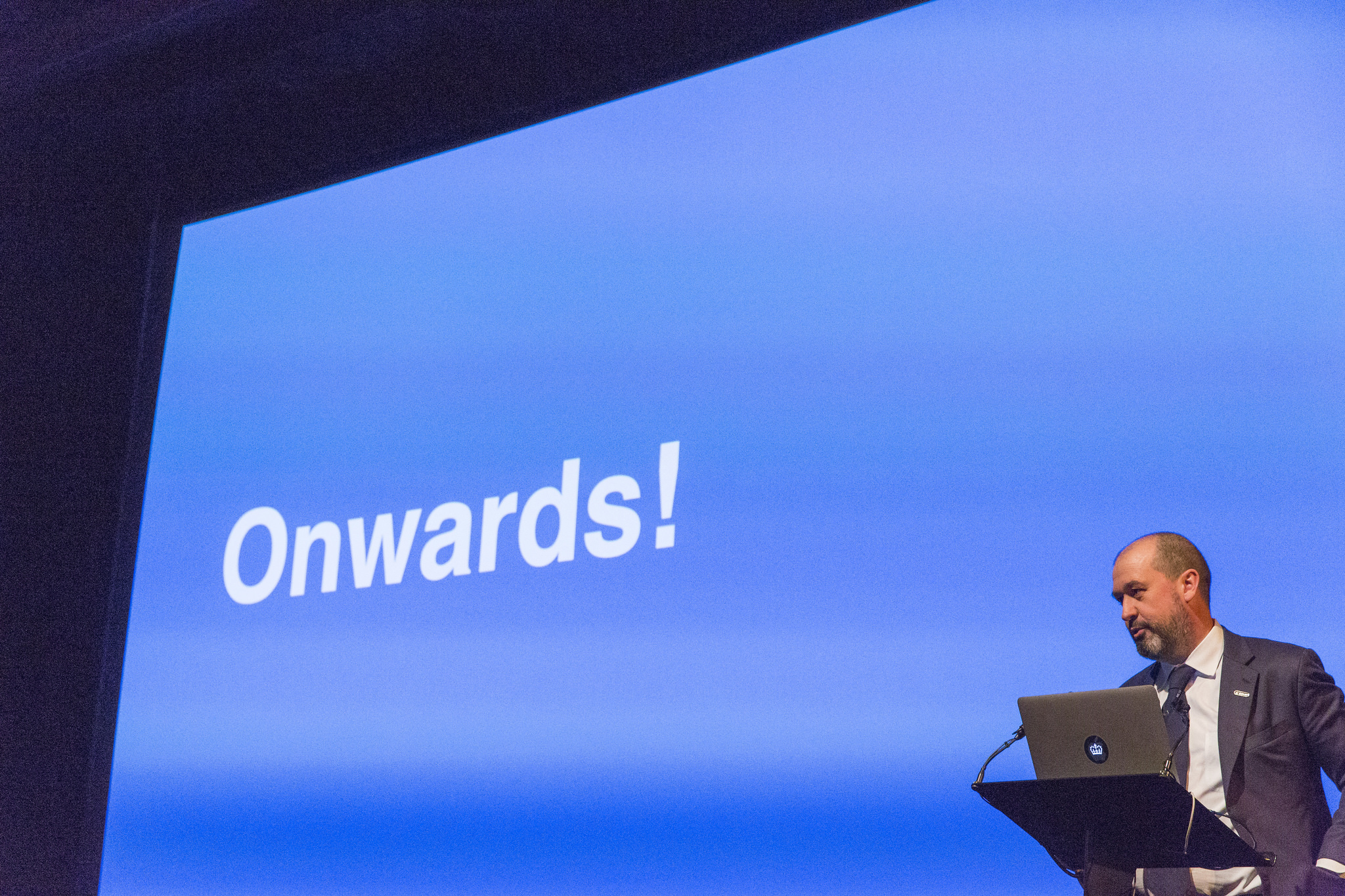
Mike Bracken, former Executive Director Digital for the UK Government, speaking about ‘The digital transformation of the UK Government ” Image by gdsteam via Creative Commons
By Steven McGinty
On the 1st March, Companies House, the agency responsible for the UK’s register of companies, announced their intention to become a 100% digital organisation by the end of 2018/19. Over 80% of companies already submit their documents digitally, but the agency is keen to move this figure as close to 100% as possible, highlighting the cost savings and improved levels of service.
However, Companies House is not alone in its digital ambitions. ‘Digital by default’, the idea that digital services should be the most convenient option for people, has been a key policy aim of the UK government.
Digital Transformation programme
In January 2013, the government introduced its first significant venture into digital transformation. The programme, which involved the Government Digital Service (GDS) – the agency responsible for digital transformation – and eight government departments, set out to transform 25 major services in 400 days, with the aim of developing services that were simpler, clearer and faster to use.
By the end of the programme, in March 2015, twenty exemplar projects had been completed, including services as varied as enabling people to register to vote, making a claim for the Carer’s Allowance, and booking a prison visit.
“Death of the self-assessment tax return”
In the March 2015 Budget, the Chancellor, George Osborne, announced a major IT project, which he described as “a revolutionary simplification of tax collection”. At the time, 12 million people were completing self-assessment tax forms every year. But by early 2016 the government expected that five million small businesses and the first ten million individuals would have personalised digital tax accounts, bringing together all their tax details. By 2020, it’s expected that over 50 million individuals and small business will benefit from personalised digital tax accounts.
Although the project has generally been praised, Jamie Morrison, private client partner at HW Fisher & Company, has warned that – apart from the most straightforward cases – automation won’t improve the self-assessment experience. Similarly, Mark Abbs, a tax partner at London-based chartered accountant Blick Rothenberg LLP, has suggested that the five-year time frame might be too ‘ambitious’.
Investment in digital transformation
As part of the 2015 November Spending Review, George Osborne provided £1.8 billion over four years to support digital transformation initiatives. This included supporting the move towards digital tax accounts, mentioned above, and the introduction of a simple payment mechanism for all central government services.
In addition to this funding, UK Trade and Investment (UKTI) – which works with businesses to ensure their success in international markets – received £24 million to simplify their online services and ensure they can interact effectively with other government services.
More surprisingly, the GDS was given a budget of £450 million over four years – an increase on its previous £58 million a year. This news was particularly positive for those connected with the GDS, as there was concern that their budget (and influence) would be greatly reduced.
Challenges of digital transformation
The biggest challenge to the goal of ‘100% digital’ is that not everyone is able to access digital services (and to a lesser degree those who have access but need support). In 2015, the Office of National Statistics (ONS) found that 14% of households in Great Britain had no internet access, with 31% reporting that this was due to a lack of skills. Other factors for lack of access included the cost of technology (14%) and the cost of accessing the internet (12%).
Elizabeth Rust, in a 2014 Guardian article, highlighted that often those who are digitally excluded need to access government services the most. She offered the example of a jobseeker who lost his Jobseeker’s Allowance because he struggled to access the internet to apply for jobs, particularly as limited access was available at his local library.
This highlights the challenge of achieving ‘100% digital’, and is why although HM Revenue and Customs (HMRC) are now moving towards digital tax accounts, there will still be an option to complete self-assessment returns in the traditional way.
In the 2016 March Budget, George Osborne also provided £71 million of extra funding to support the digital tax roll-out. These additional resources will be used to extend the opening hours of customer service offices that deal with online enquiries and tax credits. These improved services should be in place by 2017, enabling greater levels of support for users of digital tax records.
Conclusion
Digital transformation provides a major opportunity for improving government services and reducing costs. It’s not a case however of simply replicating existing customer journeys within an online environment. It requires organisations to put people at the heart of their delivery approach. And in turn, this requires significant internal challenge and change.
The ambition for digital transformation will only succeed if the government invests in digital skills, provides services that encourage people to use them, and supports individuals as they adapt to new digital services.
Follow us on Twitter to see what developments in public and social policy are interesting our research team. If you found this article interesting, you may also like to read:
- Delivering digital differently: how should we provide public services in the future?
- Air quality monitoring: a role for citizen science?
- Top 5 crowdsourcing initiatives in government: better engagement with citizens
- Introducing Reading Room: a trusted digital partner
- The digital world … why local government is still running to catch up
- Digital leadership: how should digital be represented at board level

You must be logged in to post a comment.